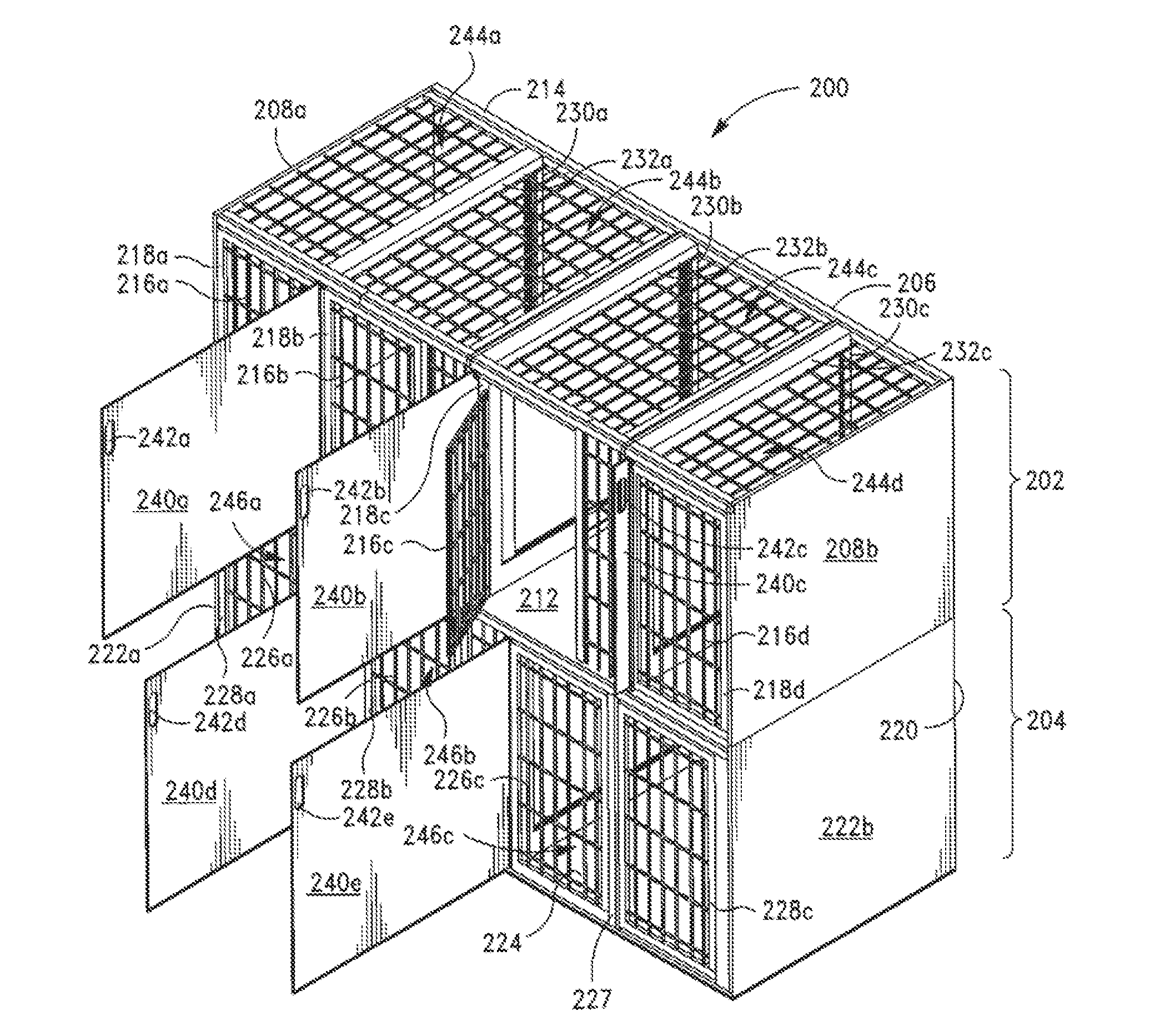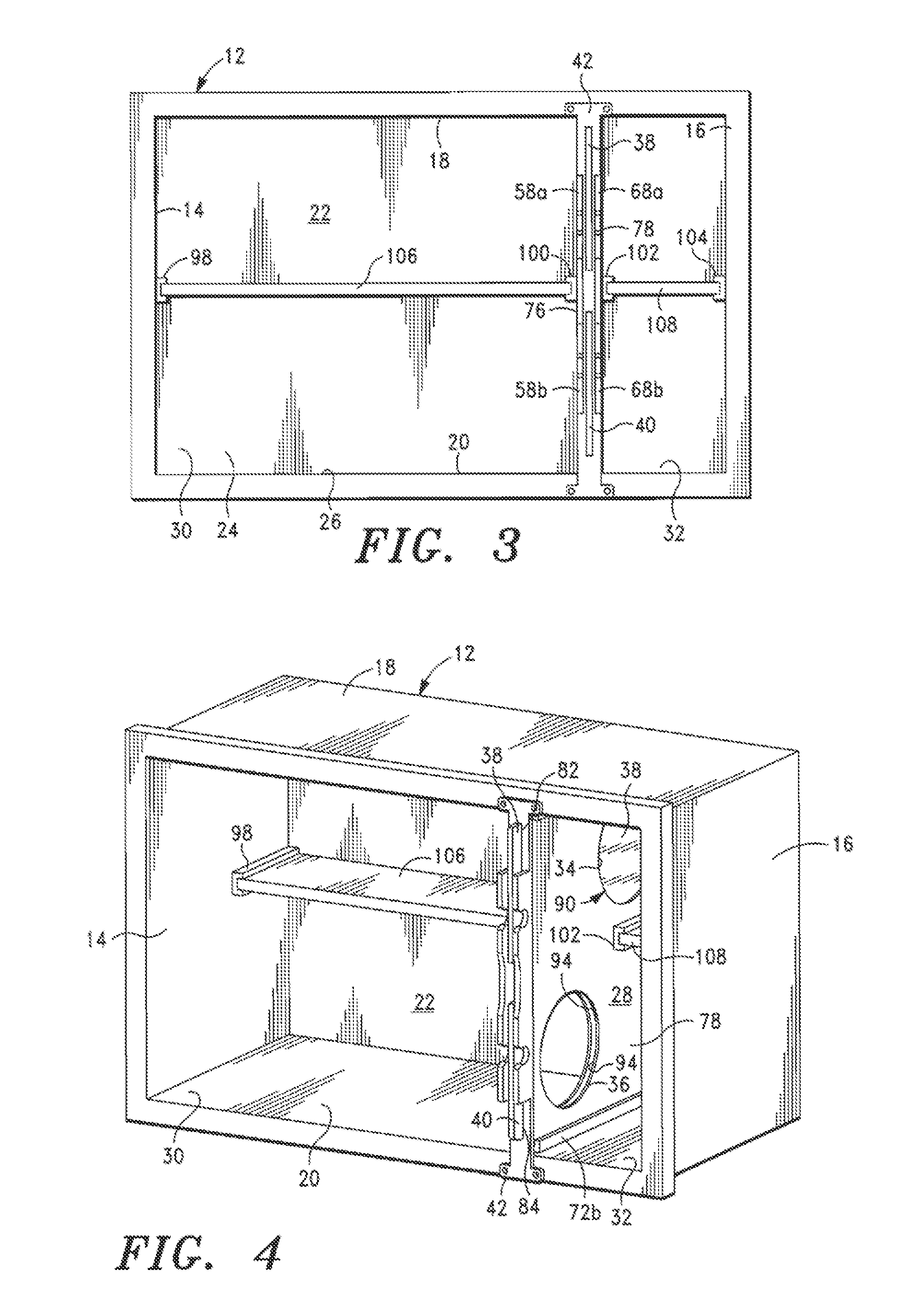Animal Cage having a Removable Divider with Door
a technology of divider and cage, which is applied in the field of animal cages, can solve the problems of limiting the size of the animal that can be housed, creating some practical problems, and being expandable or easily modified, and achieves the effect of safe cleaning or replacement, and easy customization
- Summary
- Abstract
- Description
- Claims
- Application Information
AI Technical Summary
Benefits of technology
Problems solved by technology
Method used
Image
Examples
Embodiment Construction
[0034]Referring now to FIG. 1, an animal cage according to one embodiment of the present invention is shown generally as 10. The animal cage 10 includes a housing 12 formed from side walls 14 and 16 that are joined with top, bottom, and rear walls 18, 20, and 22. The joined walls 14, 16, 18, 20, and 22 define an interior 24 of the housing 12, which is accessible via an opening 26 that is opposite rear wall 22. Looking to FIGS. 1, 4 and 5, divider 28 positioned within the interior 24 divides the interior into first and second chambers 30 and 32. There are upper and lower openings 34 and 36 in the divider 28 to allow an animal to move between the first and second chambers 30 and 32. As described below and shown in FIGS. 1 and 5, there are first and second door panels 38 and 40 that are slidable within divider 28 for regulating passage through upper and lower openings 34 and 36, respectively. A support member 42 is mounted to the front of the housing 12 between first and second chamber...
PUM
 Login to View More
Login to View More Abstract
Description
Claims
Application Information
 Login to View More
Login to View More - R&D
- Intellectual Property
- Life Sciences
- Materials
- Tech Scout
- Unparalleled Data Quality
- Higher Quality Content
- 60% Fewer Hallucinations
Browse by: Latest US Patents, China's latest patents, Technical Efficacy Thesaurus, Application Domain, Technology Topic, Popular Technical Reports.
© 2025 PatSnap. All rights reserved.Legal|Privacy policy|Modern Slavery Act Transparency Statement|Sitemap|About US| Contact US: help@patsnap.com



